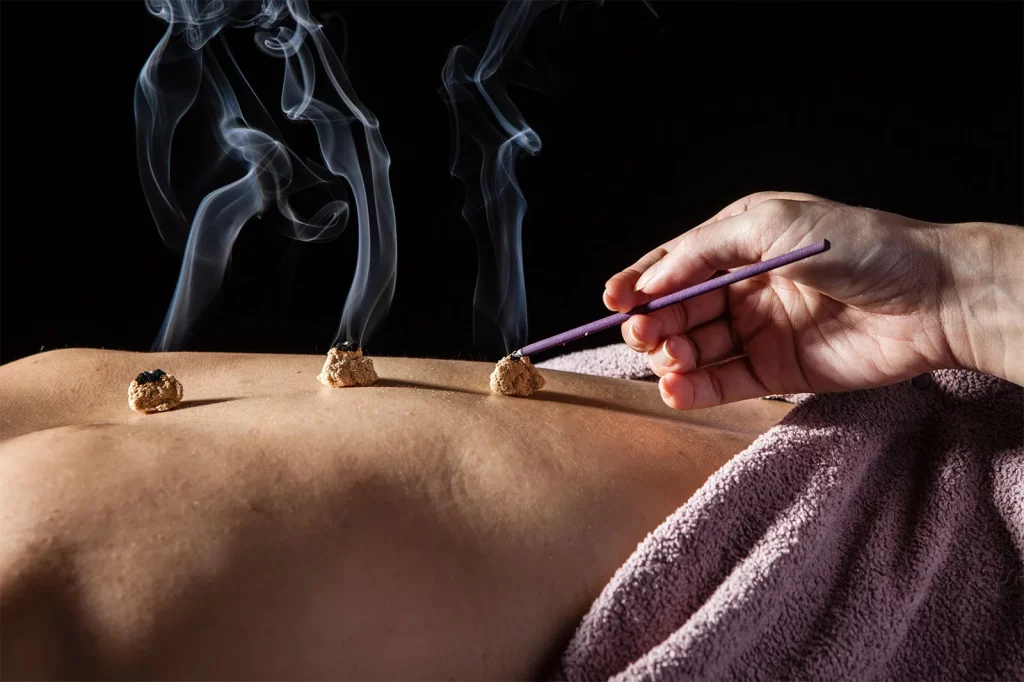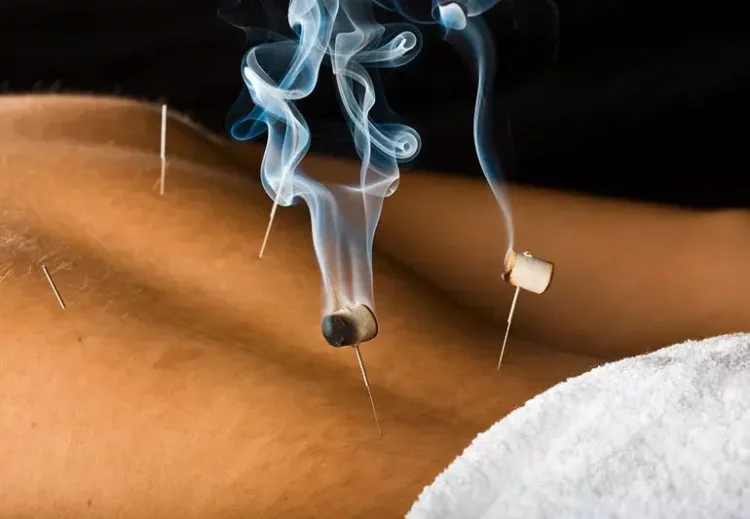Introduction
Chronic Fatigue Syndrome (CFS) is a complex and often misunderstood condition that affects millions of people worldwide. Characterized by persistent and unexplained fatigue that doesn’t improve with rest, it can also be accompanied by a range of debilitating symptoms like sleep disturbances, muscle pain, and cognitive dysfunction. Although conventional medicine often offers pharmacological treatments to manage these symptoms, an increasing number of individuals are turning to alternative therapies like moxibustion and cupping, which have been used in Traditional Chinese Medicine (TCM) for centuries.
But are these age-old therapies truly more effective than modern pharmaceutical treatments in managing chronic fatigue? In this article, we’ll explore the science behind both moxibustion and cupping, their potential benefits in treating chronic fatigue syndrome, and how they compare to conventional medications.
Understanding Chronic Fatigue Syndrome (CFS)
1.1 What is Chronic Fatigue Syndrome?
Chronic Fatigue Syndrome (CFS), also known as Myalgic Encephalomyelitis (ME), is characterized by persistent fatigue that does not improve with rest. The fatigue is often so severe that it interferes with the individual’s ability to carry out day-to-day activities. CFS can also be accompanied by other symptoms such as:
- Sleep disturbances (insomnia or oversleeping)
- Cognitive difficulties, often referred to as “brain fog”
- Muscle pain, joint pain, and headaches
- Sore throat, swollen lymph nodes
- Sensitivity to light and noise
The cause of CFS is not fully understood, but it is believed to be a combination of genetic, environmental, and psychological factors. It is often diagnosed after other potential causes have been ruled out.
1.2 Conventional Approaches to Treating CFS
Conventional treatments for CFS typically focus on managing symptoms rather than providing a cure. These include:
Pharmacological Treatments:
- Antidepressants: Medications like selective serotonin reuptake inhibitors (SSRIs) are often prescribed to help manage depression and improve sleep quality.
- Stimulants: Some doctors may prescribe stimulant medications like modafinil to combat fatigue and increase alertness.
- Pain Relievers: Over-the-counter pain medications like ibuprofen or prescription-strength analgesics are used to manage muscle pain and headaches.
- Sleep Aids: If sleep disturbances are significant, medications such as sedatives or melatonin supplements may be recommended.
While these treatments may provide some relief, they often come with side effects and may not address the root causes of chronic fatigue. This is where alternative therapies, such as moxibustion and cupping, are becoming more popular.
2. Moxibustion and Cupping Therapy: An Introduction
2.1 What is Moxibustion?
Moxibustion is a form of Traditional Chinese Medicine (TCM) that involves the burning of moxa (mugwort) near specific acupuncture points on the body. The heat from the burning moxa is believed to stimulate the flow of energy (Qi) through the body and promote healing. There are two main types of moxibustion:
- Direct Moxibustion: Involves placing a small amount of burning moxa directly on the skin, typically over an acupuncture point. The heat from the moxa is intended to penetrate the body, promoting circulation and energy flow. This method is less common due to the risk of burns.
- Indirect Moxibustion: The more common method, where the burning moxa is held close to the skin but not in direct contact with it. This method is safer and more comfortable, and it can be combined with acupuncture.
Moxibustion is believed to:
- Stimulate circulation and increase blood flow
- Strengthen the immune system
- Promote relaxation and reduce muscle tension
- Balance the body’s Qi
2.2 What is Cupping Therapy?
Cupping therapy is another ancient practice in TCM that involves creating a vacuum inside glass or silicone cups, which are then placed on the skin to draw blood to the surface. This creates a suction effect that is thought to improve blood circulation, relieve muscle tension, and promote the flow of Qi.
There are several types of cupping:
- Dry Cupping: No incisions are made in the skin. The cups are applied and the vacuum is created by heating the air inside the cups or using a suction pump.
- Wet Cupping: Involves making small incisions on the skin before applying the cups. This method is thought to help expel toxins from the body along with the suctioned blood.
- Fire Cupping: The cups are heated with fire to create the vacuum before placing them on the skin. This method is a traditional approach often used in TCM.
Cupping therapy is believed to:
- Improve blood flow and reduce muscle pain
- Relieve respiratory conditions like asthma or cough
- Detoxify the body by encouraging lymphatic drainage
- Relieve stress and tension by relaxing muscles
3. The Science Behind Moxibustion and Cupping Therapy
3.1 How Moxibustion Works: The Science of Heat and Energy
The mechanism behind moxibustion involves the application of heat to specific acupuncture points, which is thought to:
- Enhance Blood Circulation: The heat helps to dilate blood vessels, which improves blood flow to affected areas. This increased circulation can help reduce pain and inflammation, both of which are common in CFS.
- Stimulate the Immune System: Moxibustion is believed to help regulate the immune system by stimulating the body’s natural healing mechanisms.
- Promote Muscle Relaxation: The heat from moxibustion can help relax tight muscles, which can be beneficial for the muscle pain often associated with CFS.
There is some scientific evidence that moxibustion can help with pain relief, improve sleep, and boost circulation. A 2018 study published in the Journal of Alternative and Complementary Medicine found that moxibustion helped improve sleep quality and reduce fatigue in individuals with CFS.
3.2 How Cupping Works: Suction and Circulation
Cupping therapy operates on the principle of suction, which is believed to have multiple therapeutic effects:
- Improved Blood Flow: The vacuum effect caused by the cups helps draw blood to the surface, which increases circulation and promotes the healing of underlying tissues.
- Pain Relief: By increasing blood flow and relaxing muscles, cupping therapy can reduce muscle soreness and pain. For individuals with CFS, this may help alleviate body aches and joint pain.
- Detoxification: Cupping is thought to help remove toxins from the body by promoting the flow of lymphatic fluid and encouraging the body’s natural detoxification processes.
- Stress Relief: The physical sensation of cupping can also have a calming effect, reducing stress and promoting a sense of well-being.
Studies, including a 2012 clinical trial published in PLOS One, have suggested that cupping therapy can help reduce fatigue and improve symptoms in patients with conditions like CFS.

4. Effectiveness of Moxibustion and Cupping for Chronic Fatigue Syndrome
4.1 Research and Case Studies on Moxibustion and Cupping
Research into moxibustion and cupping for CFS is still limited but growing. A 2020 review published in the Journal of Traditional Chinese Medicine highlighted several studies showing that moxibustion and cupping therapy provided significant improvements in fatigue, sleep, and muscle pain in CFS patients.
For instance, a study conducted in 2017 found that participants who received cupping therapy experienced a significant reduction in fatigue and pain intensity compared to those who did not undergo treatment. Similarly, moxibustion has been shown to reduce symptoms of fatigue, improve sleep quality, and boost overall well-being in chronic fatigue sufferers.
4.2 Addressing the Root Causes of Chronic Fatigue with Traditional Therapies
Unlike pharmaceutical treatments, which often focus solely on managing symptoms, moxibustion and cupping aim to address the root causes of fatigue, such as poor circulation, energy blockages, and imbalances in Qi. These therapies work holistically, meaning they aim to balance the body’s systems rather than just alleviating isolated symptoms.
By stimulating circulation, relaxing muscles, and improving immune function, both therapies can provide long-term benefits for chronic fatigue sufferers.
5. Benefits and Risks of Moxibustion and Cupping Compared to Medication
5.1 Benefits
- Non-invasive: Both therapies are generally safe and non-invasive when performed by a trained practitioner.
- Fewer side effects: Unlike medications, which may cause side effects like drowsiness, weight gain, or gastrointestinal issues, moxibustion and cupping tend to have minimal side effects, such as temporary bruising or mild skin irritation.
- Holistic approach: These therapies focus on the body as a whole, which may offer long-term relief for chronic fatigue by addressing underlying causes, rather than just masking symptoms.
5.2 Risks and Limitations
- Burns (moxibustion): Direct moxibustion can cause burns if not done properly.
- Skin Marks (cupping): The suction created by cupping can leave temporary marks on the skin that resemble bruises.
- Infection risk (wet cupping): If not done hygienically, wet cupping could result in skin infections.
5.3 Medication: Pros and Cons
Medications, such as antidepressants and stimulants, can help manage symptoms but may come with significant side effects, including fatigue, dependency, or gastrointestinal issues. Medications also do not treat the root causes of chronic fatigue, meaning they may only offer temporary relief.
6. Conclusion: Which is More Effective for Treating Chronic Fatigue Syndrome?
Both moxibustion and cupping therapy offer significant potential in managing chronic fatigue syndrome, especially when compared to traditional pharmacological treatments. While conventional medications are helpful in symptom management, they often fail to address the holistic balance required for long-term relief. On the other hand, moxibustion and cupping focus on improving circulation, relieving pain, and restoring the body’s natural energy balance.
If you’re struggling with CFS, integrating alternative therapies like moxibustion and cupping into your treatment plan—under the supervision of a licensed professional—may provide you with a more sustainable and holistic approach to managing your condition.
However, it’s essential to remember that every individual’s experience with chronic fatigue is unique, and what works for one person may not necessarily work for another. A consultation with a healthcare provider who is familiar with both conventional and alternative treatments can help you determine the best approach for your situation.











































